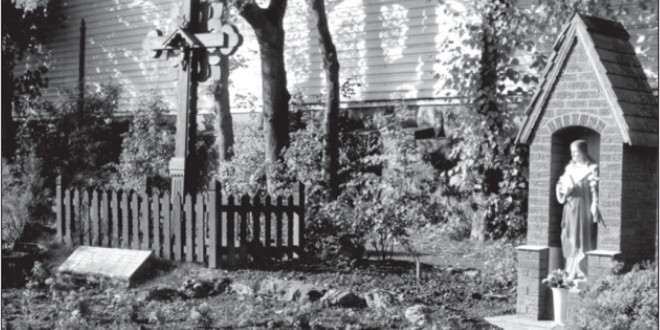BY JOHN MILLAR

ASOFT “CLUNK” FROM SOMEWHERE BELOW my feet and a slight, insistent pressure pushing me back into the seat indicated that the undercarriage had retracted and the aircraft was reaching for altitude. I leaned my head against the headrest as my thoughts went swirling, tumbling crazily through my mind.
Six days before, on the 20th of April, 1993, I had celebrated my birthday and now here I was, at the age of 70, flying off to the land of my ancestors for the very first time to dig into the past in search of my roots. Not, I may add, on a package tour or organized excursion but, as my Father had done 93 years ago, I was setting out on my own to a land where I knew no one, was not expected, and did not know what was in store for me. There were only two differences between my journey and that of my Father: I was traveling by air eastward while he had sailed west, and my trip was of a voluntary nature; his had been to escape the wrath of the Czarist authorities.
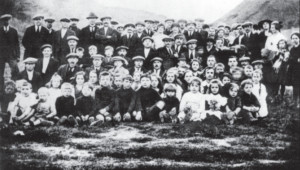
I could not prevent a sense of apprehension creeping into my thoughts. For a moment I felt as if I was in the “Starship Enterprise”—boldly going where no man had gone before—I was on my way to a strange, far-away land where my feet had never trodden.
What lay ahead? What would I find? A cultural shock, perhaps? Would I find welcome or rejection? How would I cope with the language and customs? Why had I undertaken this journey? What was this compulsion that had driven me? Had this flight actually originated 93 years ago in the year 1900 when my father, Vincentas Stepšis, had landed at Leith, Scotland? As a book smuggler—“knygnešys”—he was fleeing from capture and incarceration by the occupying Czarist Russian authorities.
Or did it begin only three years ago when my son, a journalist, on returning from a business trip to the United States of America, tossed a package to me saying: “There’s a wee present for you, Dad?” The present was a book with the title in gold lettering— “MY FAMILY TREE.”
Most family history researchers begin to experience some difficulty after they have traced back perhaps 200 or so years, even if their ancestors lived, worked, married and died in more or less the same geographical location. Imagine then the problems I faced when I began to trace my forebears. My immediate ancestors, Father and Mother, were 36 and 56 years dead respectively, 120 years had passed since my Father’s birth and—most important of all—both my parents were immigrants from Lithuania in 1900 and 1903.
As I was only 11 years old when my Mother died, I had only my vague childhood memories of her. I knew nothing of her family, whether she had brothers or sisters in Scotland or Lithuania. Although my Father survived to his 84th year, like all families the offspring quit the nest to make their own homes and families with only occasional reunions and the subject of family history never came up.
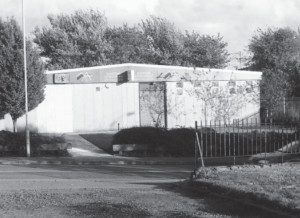
By the time I began my search in earnest, everyone of the previous generation who could have helped me was long gone and I was bemoaning, as most do, that I had not asked enough questions while parents and elderly relatives were there to give answers.
Where then could I find a starting point at least? Luckily I had a younger sister who had kept house for our Father until he died. Maybe she could help me?
YES!! She had kept a little bundle of documents belonging to both our parents and was only too happy to let me inspect and photocopy them. I now found I had copies of the following:
a. My Father’s Lithuanian birth certificate.
b. My Mother’s Lithuanian birth certificate.
c. Their Scottish marriage certificate.
d. My Father’s “Certificate of Registration of an Alien,” August 23, 1914.
e. A certificate from the Imperial Russian ViceConsulate in Glasgow which stated that he could speak the Russian language, May 24, 1916.
f. A small pale, blue booklet in the Russian language, 1894.
g. A slightly larger booklet also in Russian, 1894.
h. A letter in Lithuanian from the U.S.A., November 11, 1921, from an uncle I had never known.
i. A photograph of my Mother in Lithuanian national dress, aged 18 or 19.
j. A photograph of the family group in 1930.
A meager collection, perhaps, but to me this was more than I had hoped for and I was now desperate to follow all the clues these papers could provide. Although I had both parents’ birth certificates, I soon found they were not the “Open Sesame” to my Lithuanian ancestors. The certificates were brief documents with the bare essentials of information: child’s name, where and when born, father and mother’s names. At least I now knew the area in Lithuania where they were born and my four grandparents’ names.
I began a long and wearing correspondence. As I had no one to question, I wrote to all sorts of people, organizations and government departments. I started a file to hold my little store of papers and subsequent letters, etc. The Registration of an Alien Certificate was the first documentary evidence of my Father in Scotland and my initial efforts were to establish the how, where and when of his arrival here.
From childhood memories of my Father’s tales, the Port of Leith in 1900 was the arrival place and time. Letters were written and sent to H. M. Customs and Excise, H. M. Immigration Office, the Scottish Record Office, the Public Record Office, Leith Harbour Authority, Leith Maritime Trust, British Steel, and many, many more. Although all replies received were negative, most were extremely helpful, suggesting other people or organizations to contact. In addition to letter writing, I was spending days in reference and local history libraries following up any little hint or clue. Anything referring to Eastern Europe, Baltic States, or Scottish immigration was eagerly read, the notes and bibliography checked for relevant publications which were speedily requested.
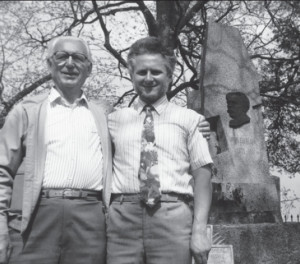
A sentence in a book saying that the Glengarnock Iron and Steel Company in 1887 had “brought 20 Lithuanians to Scotland” to work in their mines and ironworks meant an upsurge of interest. My Father had worked in the ironworks and lived in Glengarnock! A letter was sent post-haste asking about the Glengarnock Works records.
Most industrial firms I had contacted had replied saying that they did not retain very old records and I did not hold out much hope of information from the Glengarnock enquiry. Imagine my surprise when, instead of a letter, a Mr. Patterson, manager of the Hunterston Ore Terminal, came to my house with a copy of my letter in his hand and said that the Head Office had told him to give me all the assistance he could. Another file was filled with information but still nothing concrete on my prime research.
In the acknowledgment section of a publication called “Glengarnock, A Scottish Open Hearth Steelworks: The Works, The People” I found… “One person who merits a special mention is Mr. Murdoch Rodgers for the invaluable help with research material he had gathered in the preparation of a Ph.D. thesis on Lithuanian immigration into the United Kingdom c1880–1920.”
Oh! I had to find this Mr. Rodgers and read all his research material. My friend and researcher in Edinburgh tracked him down and a very busy Murdoch Rodgers, now a director of a film and TV company, spared the time to talk to me on the telephone and promised to send me what he had published as he had not completed his thesis.
By this time I had also found the Scottish Lithuanian Social and Recreation Club in the town of Bellshill, Lanarkshire. Two visits there—the second a five and a half hour interview with Frank Dullick (the expert on Lanarkshire Lithuanian history)—brought more reams of wonderful information on the Lithuanians, but again, all secondary to the prime objective.
I decided to write to Lithuania which had recently thrown off the yoke of the USSR and was once more independent… but to whom?
Family historians, I feel, have to be persistent, stubborn, aye, even cheeky, so I addressed my letter to the “Registrar General of Vilnius,” the capital city. Surely, it would reach someone who would pass it on to the appropriate people.
Some five or six weeks later a letter with foreign stamps dropped into my letter box. I had a reply from Lithuania!
My letter had reached the offices of the National State Archives and their Vice-Director confirmed that they held records for the areas listed on my parents’ birth certificates back to at least 1798 despite two world wars and military occupations with only a few gaps in their continuity. This was tremendous news for me. All I needed was access to the records.
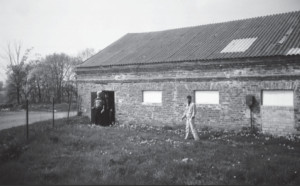
Three weeks later I had booked my flight to Vilnius. So, here I was, in an aircraft speeding at about 500 m.p.h. towards the ancient land of my fathers, reversing the journey of nearly a century ago my parents had undertaken. The slight sense of apprehension lingered in my mind. I had been bilingual as a child but had not spoken the Lithuanian tongue for nearly forty years since my Father had died and, of course, as an uneducated peasant the speech and vocabulary I had absorbed in our home was perhaps unintelligible in present-day Lithuania and I was afraid I would find myself definitely a stranger in a strange land.
My fears regarding my sojourn in a foreign land were quickly swept away. From the very first moment of landing every hand held out to me was a helping and friendly one. Although I had always wanted to see this land of my forefathers, so long hidden behind the Iron Curtain, my main reason on this occasion was to search for those forefathers. So next morning off I went, with my file and their last letter, to the National State Archives to see the man whose signature was appended on the letter—Vice-Director Alfonsas Tamulynas.
Completely unannounced and unheralded I walked in on this very busy man in the midst of a meeting with a colleague. I was very warmly greeted and given an hour to explain my needs. An appointment was then made for the Thursday of my second week when I was assured that Mr. Tamulynas would be at my disposal all day if need be. “I’ll have looked out all the relevant records by then,” he said. “You can do some sightseeing in the meantime.” I couldn’t waste more than a week gawking at the scenery, no matter how beautiful, that was not my reason for being here.
An introduction to a Dr. Vytautas Bakašėnas, Director of the National Immunization Project of the Department of Health, raised my hopes. He was extremely interested in the “why” of my visit and, on learning that my parents’ birthplaces were the Marijampolė and Kudirkos Naumiestis areas, he said he could arrange to take me there but not till the Monday of my second week. I would have to be patient but I saw my fortnight in Lithuania visibly shrinking.
The Chamber Choir of the Vilnius Academy of Music had sung in Largs, Ayrshire during their Scottish tour and I had spent a short time with their Maestro, Professor Tadas Šumskas, who had given me his address and telephone number and asked that I contact him when I landed in Lithuania. The Professor met me and introduced me to a member of the choir, Alvydas Kisielauskas, who was very quickly to become my friend, guide, and mentor on the language, history and culture of the country. Lunch and a whirlwind tour of Vilnius brought us to the end of the day with the promise that Alvydas would help me in any and every way possible during my stay.
Next morning, immediately after breakfast, there was Alvydas at my bedroom door to say: “Come on, you can’t come to Lithuania and NOT visit Trakai.”
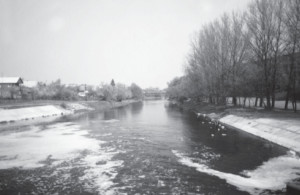
Trakai is the Historical National Park with an insular castle from the 14th century, the home of Lithuanian rulers. The castle on the island in Lake Galvė has been completely restored and is now a museum of the historical, archaeological and cultural heritage of the country. A most beautiful and interesting place and I had a very enjoyable day with an insight into the country’s past—but not into MY family’s!
The following day, at my suggestion, was spent trying to trace any living relatives. A telephone call to the equivalent of Directory Enquiries elicited the fact that there were only two subscribers with the same surname as my family—Stepšis. It is not a common name I was told. At last I thought, I’m maybe getting somewhere.
The first number phoned seemed promising. I was asked if I had an uncle Juozas. Yes! Had he gone to America? Yes! Alas, their uncle Juozas had gone to Argentina while mine had traveled to Boston, Massachusetts. Further conversation showed their antecedents originated in an entirely different area from mine. In family history research every little clue must be examined and followed to a conclusion but this one had ended in a blind alley.
On initial contact the second family appeared to hold more promise. Our telephone call was answered by a lady who said she was only a Stepšis through marriage and could recall little of her husband’s ancestry. We could call later in the evening when he returned from work. Her husband, when contacted, said he could only go back as far as his grandfather who was originally from the Suvalkija area. The same area as my Father! He knew nothing of his ancestors beyond that but promised if any other information came to hand he would contact me, and so clue number two had reached an impasse for the moment although its potential had not been exhausted.
It was Friday and my first week in Lithuania was quickly coming to an end. Over lunch Alvydas said to me: “Come with us for the weekend to a farm in the country. My wife’s parents and grandparents have a farm near Molėtai. The whole family are gathering Saturday and Sunday to help with the potato planting. As we have little or no mechanization since the Russians left, come and see how your Father must have worked a farm 100 years ago.” I did not need to be asked twice.
The weekend was spent planting potatoes and other root crops, fishing in the lake, exploring the surrounding area, all in the company of a warm, welcoming, homely people anxious to hear my tales of Scotland and telling me their own stories, happy, sad, and even harrowing. It was a most enjoyable two days which gave me a greater insight into the life my parents had led and recalled memories of the stories told to me as a child.
Dr. Bakašėnas arrived with breakfast on Monday morning and we were off, firstly to Marijampolė where my Mother’s birth was registered. In a similar way to pre-1855 Scotland, registrations were made in the church records for the area, all of which were now in the National Archives where I would be in a couple of days time.
This journey, therefore, was not in search of records but of people and places. On our arrival at Marijampolė, the Doctor introduced me to a colleague, Dr. Albertas Barzda, who was Medical Officer of Health for the region. Over the inevitable coffee Dr. Barzda made some phone calls and then told me he had contacted the Land Registration Office and had been given directions how to get to Mikalinės Dvaras, the actual farm where my Mother was born. “The farm has been demolished,” he said, “and a school has been built there.”
The headmistress met us and guided us round the premises. A pond at the site was pointed out as the original farm duck pond and a single stone pillar on which had hung the farm gate, preserved as a relic of the past. In the school hall was a large frame containing three photographs. “Like your Father, these were the local book-smugglers,” she said.” We look on them as heroes and they are part of our history taught to the children. The man in the center died in Siberia as a prisoner; his granddaughter lives in London.”
Next stop was Kudirkos Naumiestis, my Father’s registration district. As we came towards the town, I noticed the word “Šešupė” on a bridge and I asked if that was a river, for I remembered Father saying, “Many a time I had to swim the Šešupė.” For a moment I though Vytautas had lost control of the car as he pounded the steering wheel. “Your memory is excellent,” he said. “Not far from here the Šešupė River is the border between Lithuania and the old East Prussia.”
We stopped at a house for directions to Sakalupio Dvaras, my Father’s birthplace, and were introduced to an 84 year old lady, who, on hearing why I was there, threw her arms round me saying: “Without men like your Father we would now have no language, no literature and no culture. I do not remember your family name but I worked on that farm for 26 years and I know exactly where it is, although there is now not a stone upon a stone. Gina here can show you if you want to see the place.”
Her daughter Gina guided us about a mile along a dirt road then pointed to a low mound with some shrubs and small trees growing round it. “That was the farm, a big place, where your Father was born. Although my mother said there is not a stone upon a stone, I have a stone I took from here and if you come to my house you will see it.” Whatever it was I had to see it. When we reached her home, in a place of pride in the garden, sat a millstone, about three feet in diameter and 18 inches thick. “That millstone came from Sakalupio Dvaras. Perhaps your Father’s hands have lain on it, so now you place your hands on it.” Sentimental? Perhaps. Nostalgic? Maybe. But my hands on that stone seemed to bridge the gap between me and the land of my fathers. The bread my Father had eaten as a boy and young man had come from the flour ground by this stone. How could anyone with the least little bit of poetry in their soul not be moved? After a hundred years or more, hands with the same blood in their veins had once again been in contact with an artifact that spanned the years.
My search for ancestors exceeded my expectations when I kept my appointment at the Archives—20 minutes early in my eagerness. I was again welcomed by Alfonsas Tamulynas and during the usual coffee ritual, he told me of his efforts on my behalf during the past week. There are NO microfilmed records. Every register and record has to be manually examined and as Alfonsas said: “The only computer I have is between my ears.” With not a little pride he produced photocopies of the following for me: The marriage entry of my paternal grandparents, the marriage of my maternal grandparents, the death entry of my paternal grandfather, the birth entry of my Mother, the birth entry of my Father’s brother, the names of four greatgrandparents, the names of my Father’s cousins, and the names of my Mother’s godparents.
This was success beyond my dreams when I first considered making the journey to Lithuania, yet Alfonsas apologized to me that he had not got more or further back in time and promised he would continue digging on my behalf and keep in touch with me.
The result of my search in Lithuania for ancestors and relatives can be summarized as follows:
a. I have seen the places where my parents wereborn. Although the dwellings are no longer there, I have walked on the same earth.
b. I have seen the pond and the river spoken of by my father.
c. I have laid hands on the millstone used by my forefathers.
d. I have found two families with the same surname as ours and although relationship at the moment cannot be proved, the name is not common and further research may bear fruit.
e. I have documents reaching back to great-grandparents and this research will continue.
Therefore this, my first ever visit to Lithuania, my ancestral land, as a family history project has definitely been a success. As a holiday and an exercise in meeting the people, it has been most enlightening, educational, and thoroughly enjoyable.
In the little phrase made world-famous by General Douglas MacArthur — I SHALL RETURN!
 DRAUGAS NEWS Lithuanian World Wide News in English
DRAUGAS NEWS Lithuanian World Wide News in English
